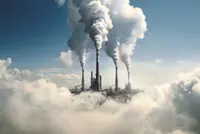Climate change is making droughts more frequent and severe. - Freepik.com/jcomp
Climate change is said to be the biggest threat to humanity today.
We are already experiencing its devastating impacts such as sea-level rise that leads to coastal erosion; drier weather leading to drought, and intense rainfall.
Already a subscriber? Log in
Save 30% OFF The Star Digital Access
Cancel anytime. Ad-free. Unlimited access with perks.





